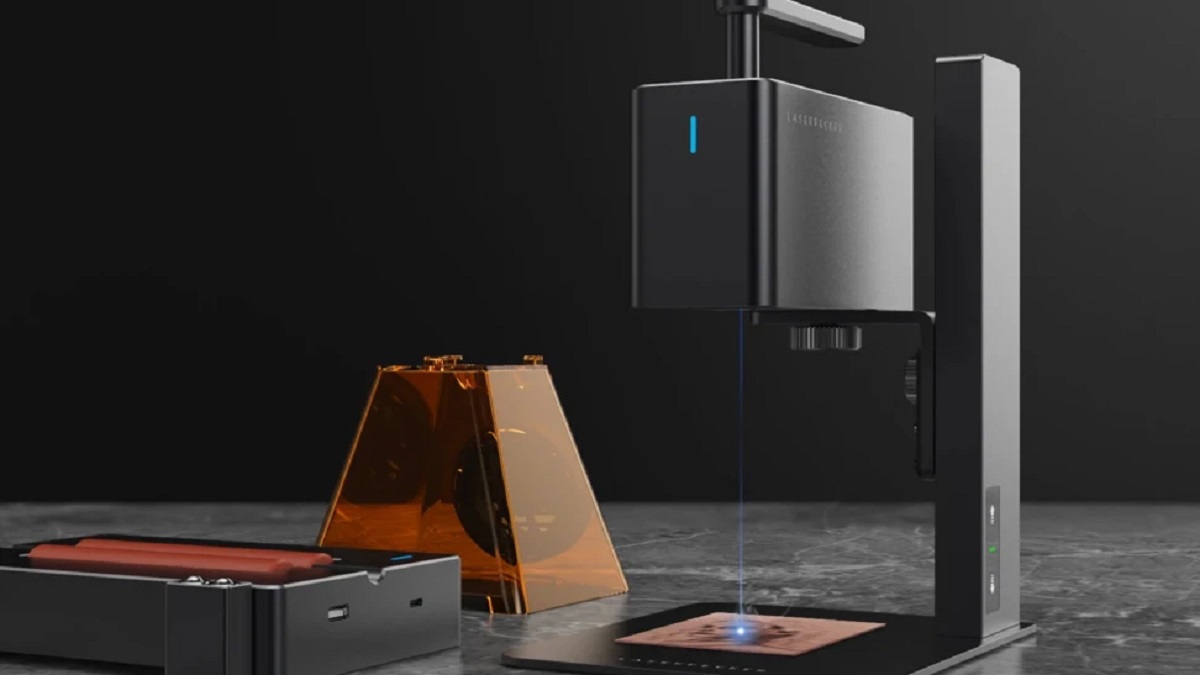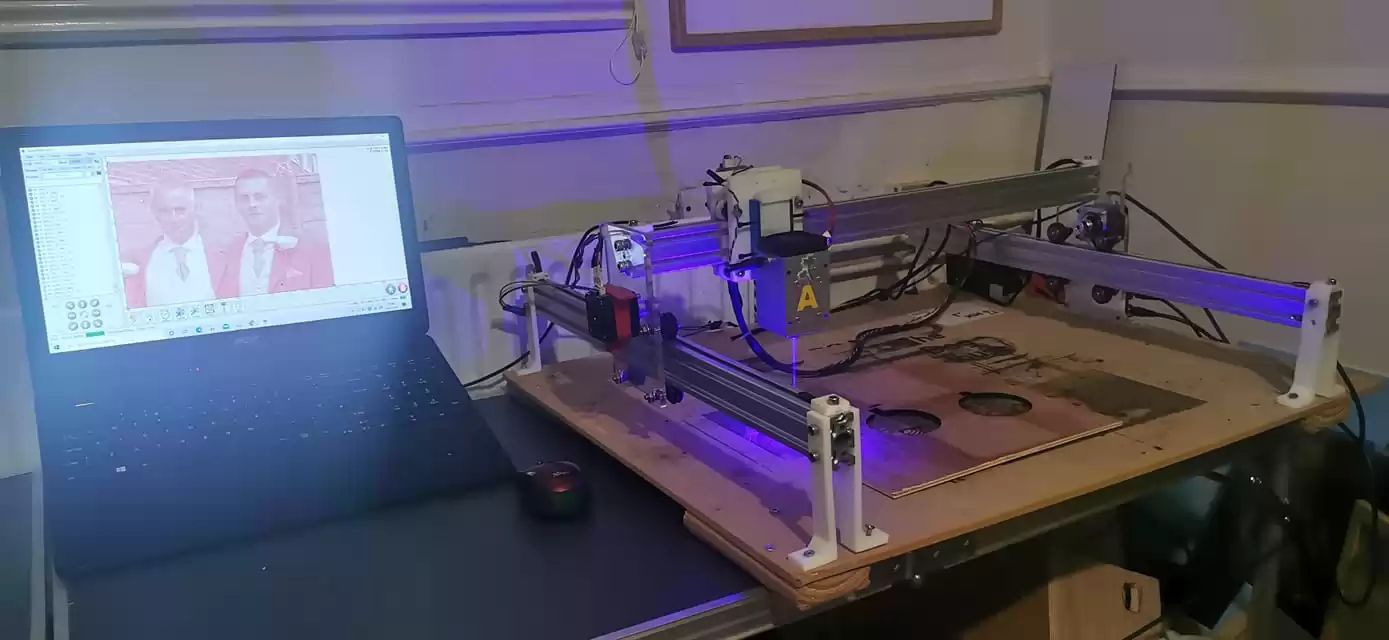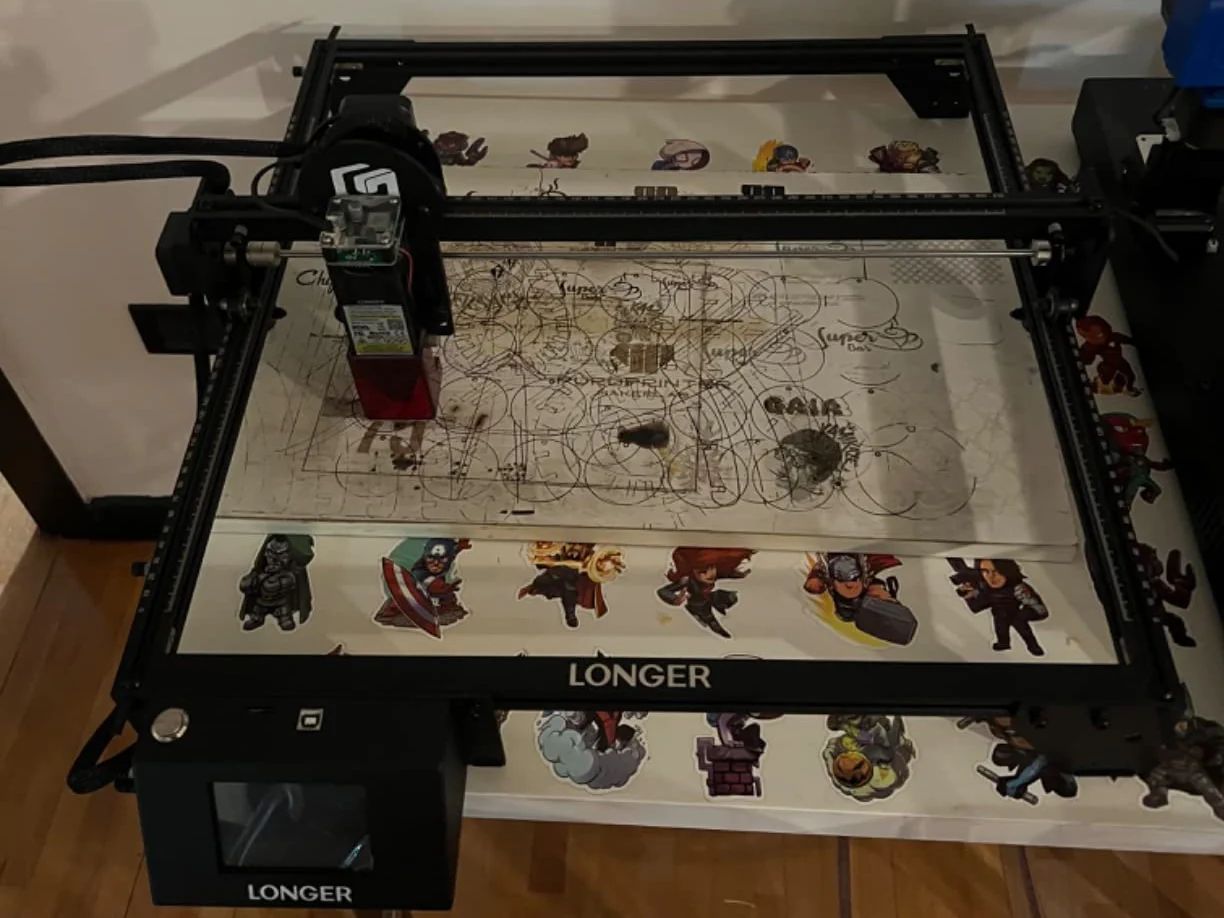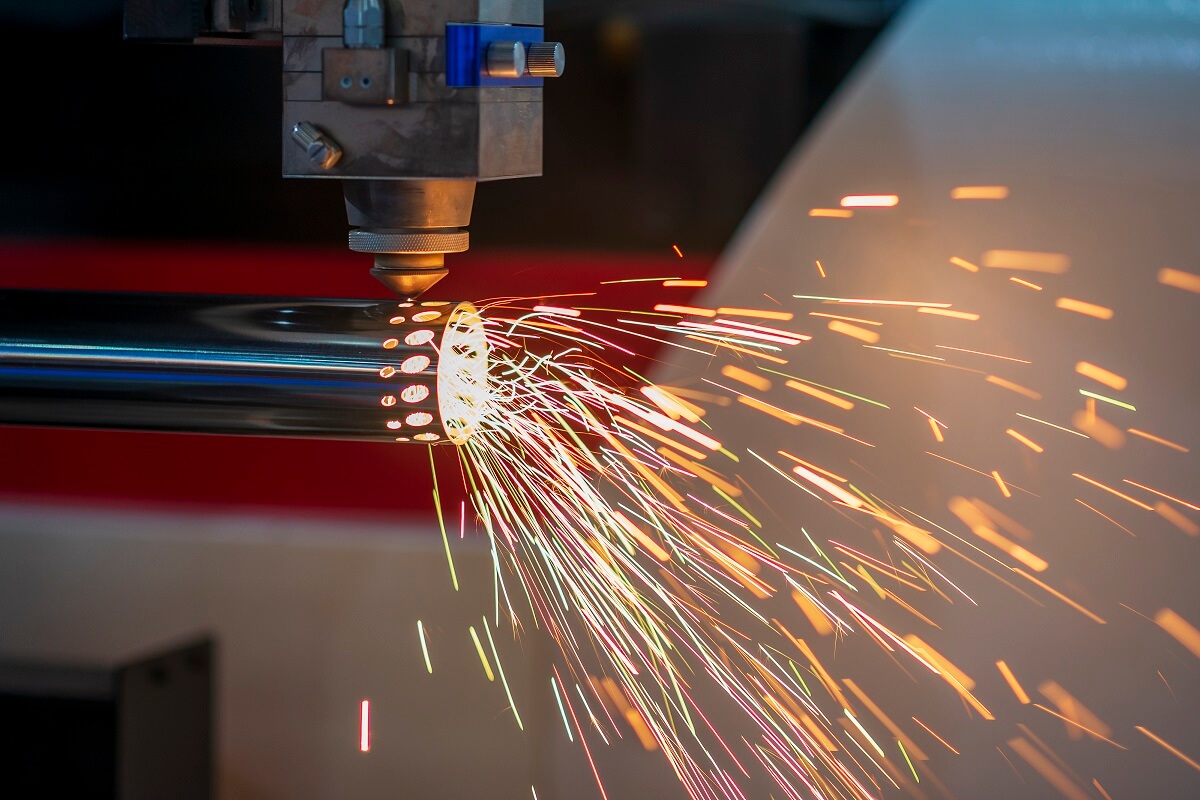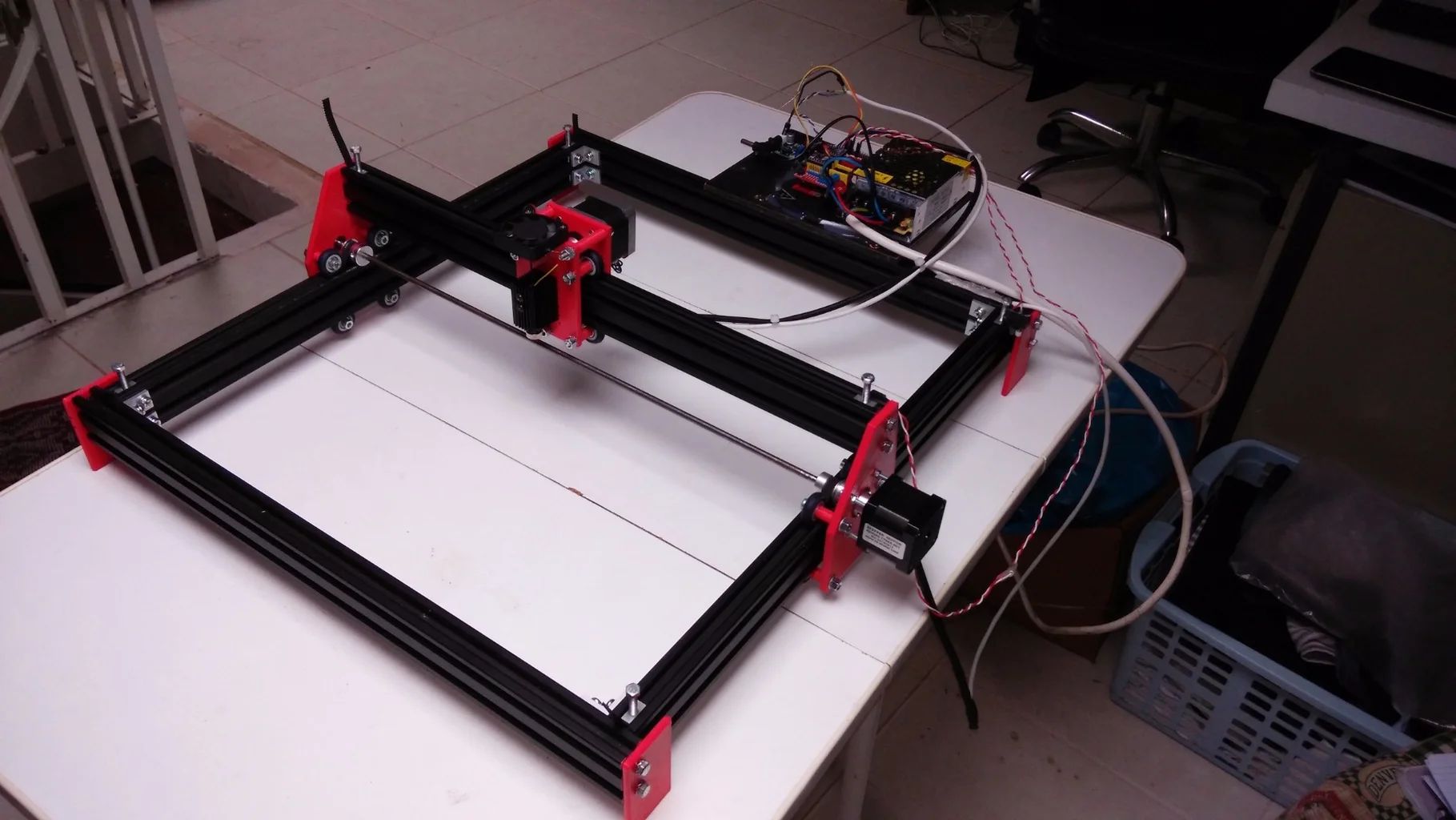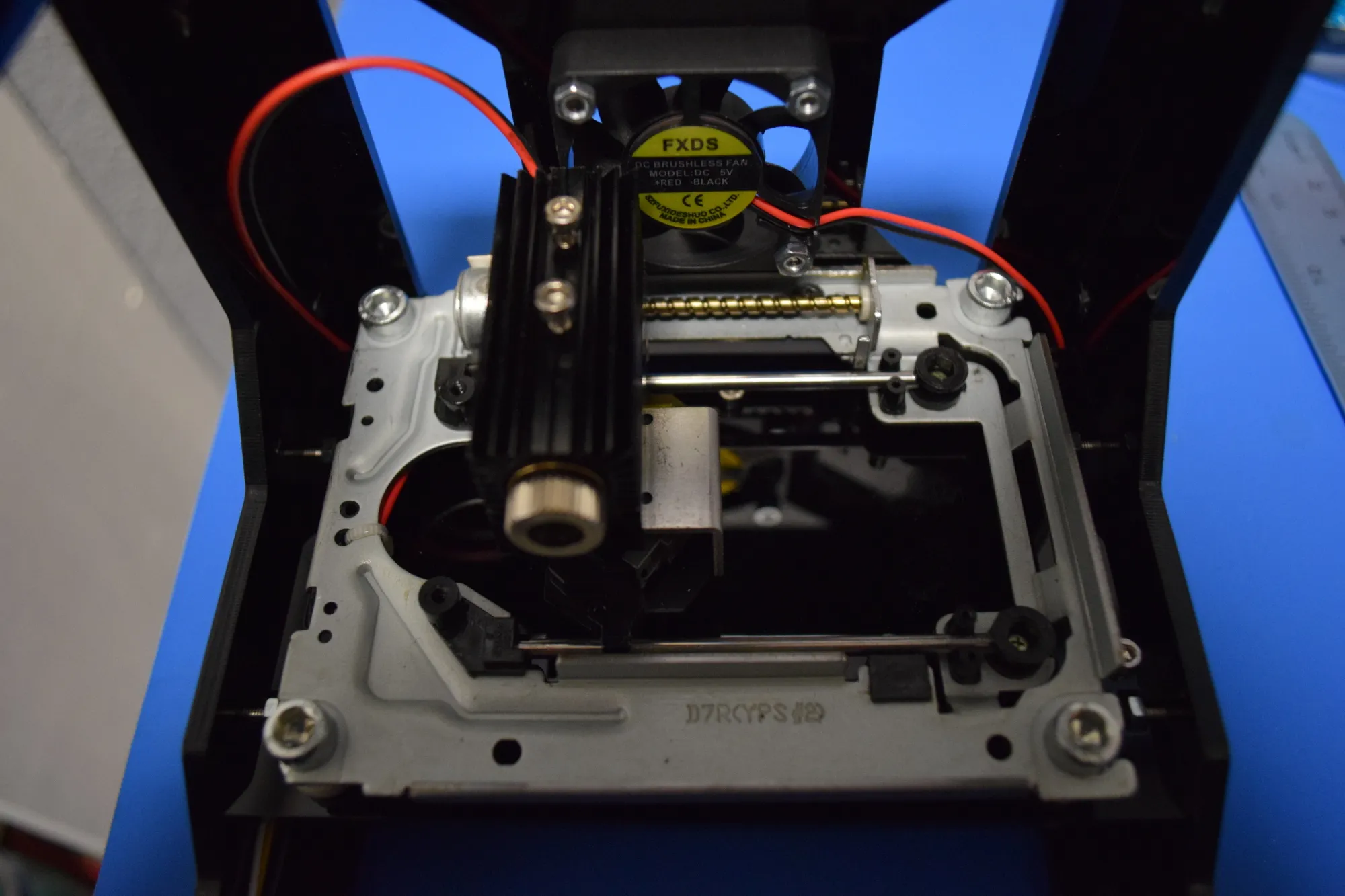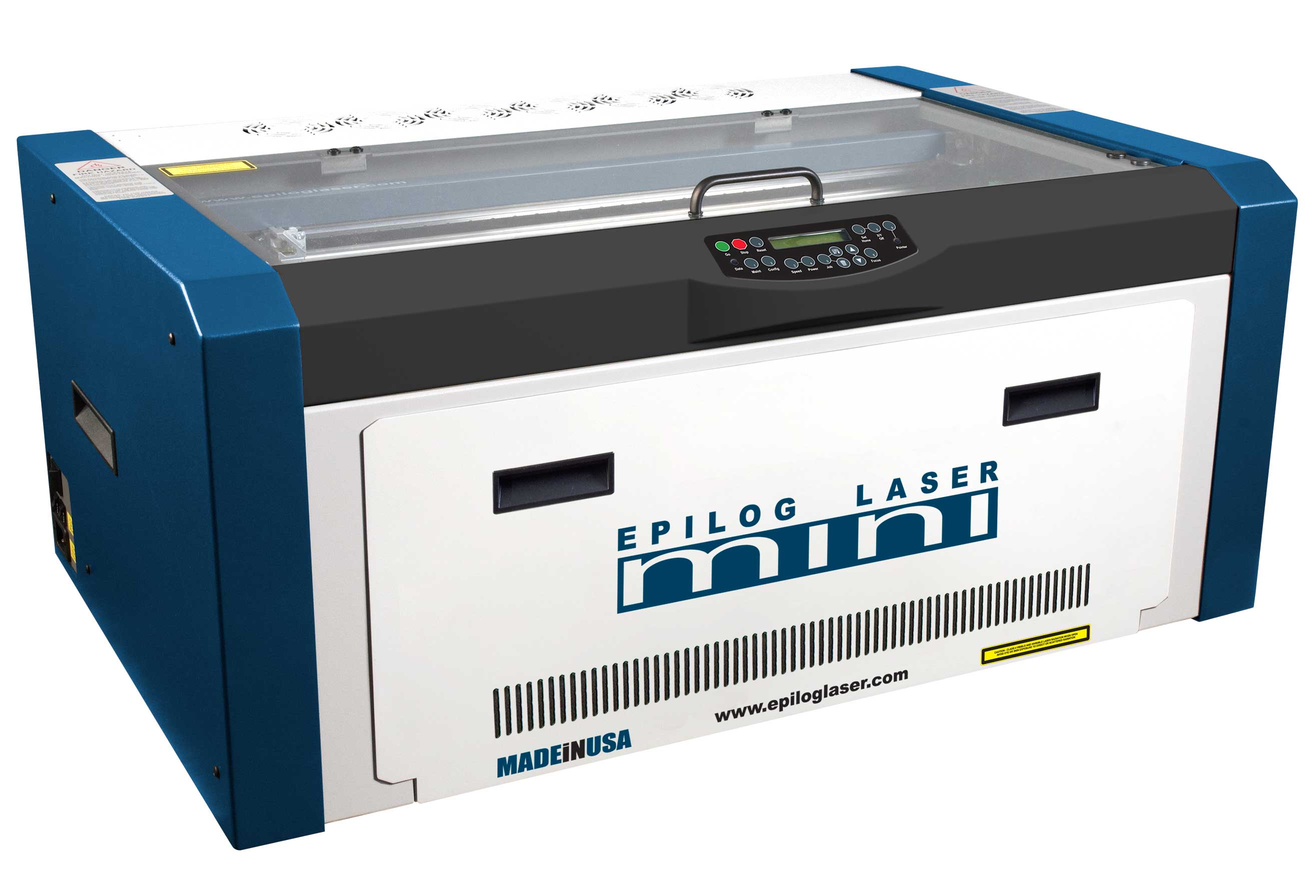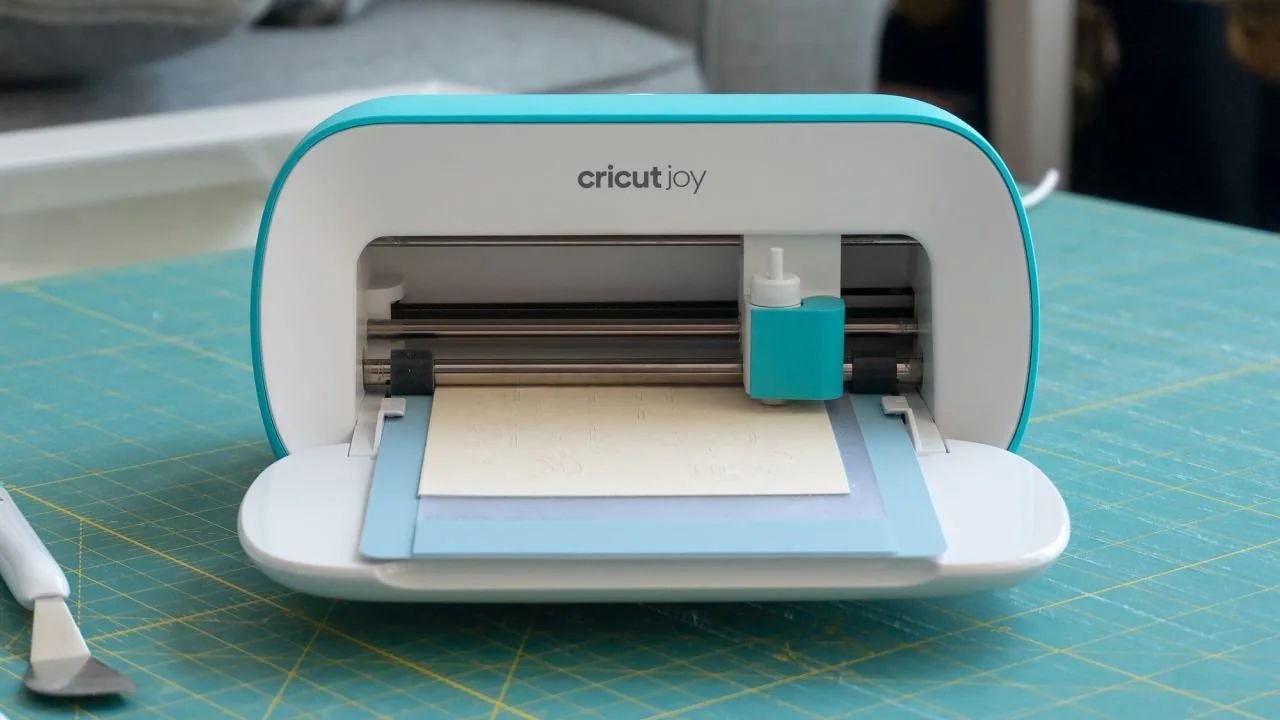Introduction
Laser engraving has become an increasingly popular way to add intricate and personalized designs to various materials. From creating custom artwork on wood and acrylic to engraving logos on metal surfaces, laser engraving offers a versatile and precise method for enhancing products and personal items.
To successfully harness the power of laser engraving, one crucial component is the laser engraver software. This software acts as the control center, allowing users to create and manipulate designs, adjust laser settings, and ultimately bring their visions to life. Choosing the right laser engraver software is essential for both beginners and experienced users, as it directly impacts the workflow, functionality, and overall output quality.
In this article, we will explore the world of laser engraver software, particularly focusing on the best free options available. We will delve into the features and functionalities that make these software solutions stand out, and discuss the factors to consider when making a selection. Whether you are an artist, hobbyist, or small business owner, this article will serve as a guide to help you find the best free laser engraver software that suits your needs.
What is laser engraving?
Laser engraving is a technique that uses laser technology to etch or mark the surface of various materials. It provides a high level of precision and detail, making it a popular choice for creating intricate designs, logos, and text on a wide range of materials such as wood, acrylic, glass, leather, and metal.
The process of laser engraving involves using a laser beam that is directed onto the surface of the material. The laser beam selectively removes or alters the material, leaving behind a permanent mark or design. The depth and clarity of the engraving depend on various factors, including the power and speed of the laser, the material type, and the engraving software settings.
Unlike traditional engraving methods that rely on physical tools, laser engraving offers numerous advantages. It allows for highly intricate and complex designs, with the ability to achieve fine details and sharp edges that would be difficult to achieve using conventional methods. Laser engraving is also non-contact, which means there is minimal risk of damaging the material or distorting the design. Additionally, laser engraving is a fast and efficient process, enabling users to create high-quality engravings in a relatively short amount of time.
Laser engraving finds applications in various industries. It is commonly used for personalized gifts, promotional items, signage, jewelry, electronics, and even industrial applications such as serial number marking and part identification. The versatility and precision of laser engraving make it a valuable tool for both creative and practical applications.
The importance of laser engraver software
Laser engraver software plays a crucial role in the laser engraving process, as it serves as the interface between the user and the laser engraver machine. It is responsible for translating design concepts into commands that the machine can understand and execute. The software not only enables users to create and edit designs, but also controls the speed, power, and intensity of the laser beam, ensuring precise and accurate engraving results.
One of the key benefits of laser engraver software is its ability to support various file formats. Whether it’s vector-based files such as SVG, DXF, or AI, or raster-based images like JPEG or PNG, the software can import and convert these files into compatible formats for engraving. This versatility allows users to work with existing designs or create their own from scratch, providing endless possibilities for customization.
Moreover, laser engraver software offers advanced editing features that can enhance and optimize designs. Users can adjust the size, position, and orientation of the design, as well as modify individual elements within a design. This flexibility enables precise control over the engraving process, ensuring that the final result matches the user’s vision.
Another important aspect of laser engraver software is the ability to optimize engraving settings. The software allows users to adjust essential parameters such as power, speed, and dpi (dots per inch) to achieve the desired engraving outcome. Fine-tuning these settings is essential for obtaining the desired depth, contrast, and clarity of the engraving. Laser engraver software provides a user-friendly interface that simplifies the process of adjusting these settings, making it accessible to users of all skill levels.
Furthermore, laser engraver software often includes additional features such as the ability to simulate the engraving process before executing it on the actual material. This feature allows users to preview the design, identify any potential issues, and make necessary adjustments before engraving. It helps save time and material by minimizing errors and ensuring optimal results.
In summary, laser engraver software is an integral part of the laser engraving workflow. It enables users to transform their design ideas into tangible engravings, providing control, precision, and flexibility. By utilizing the advanced features and functionalities offered by laser engraver software, users can unlock the full potential of laser engraving and bring their creative visions to life with exceptional detail and quality.
Factors to consider when choosing laser engraver software
Choosing the right laser engraver software is critical in optimizing your laser engraving experience. With numerous options available, it’s essential to consider several factors before making a decision. Here are some key factors to consider when choosing laser engraver software:
1. Compatibility: Ensure that the software is compatible with your laser engraving machine. Different machines may require specific software to operate effectively. It’s important to check the compatibility requirements of both the software and your engraving machine before making a choice.
2. User-friendly interface: Look for software that offers an intuitive and easy-to-navigate interface. A user-friendly interface makes the design and engraving process more efficient and enjoyable, especially for beginners. The software should have clear menus, icons, and tools that are easily accessible and understandable.
3. Design capabilities: Consider the design features and capabilities offered by the software. Look for tools that allow you to create, edit, and manipulate designs easily. Features such as vector editing, text manipulation, and shape creation are beneficial for creating unique and personalized engravings.
4. File compatibility: Ensure that the software supports a wide range of file formats, including both vector and raster formats. This flexibility allows you to work with various design files, whether they are created within the software or imported from external sources.
5. Engraving control: Consider the level of control the software provides over the engraving process. Look for features that allow you to adjust the laser power, speed, and resolution to achieve the desired engraving outcome. The ability to simulate and preview the engraving before executing it on the material is also a valuable feature to have.
6. Community and support: Research the software’s community and support resources. Check for user forums, tutorial videos, and a responsive support team. Having access to a supportive community can be invaluable when you encounter challenges or have questions about the software.
7. Budget: Consider your budgetary constraints when choosing laser engraver software. While some software options may have a one-time purchase price, others may require a subscription or have additional costs for certain features or upgrades. Evaluate whether the features and functionalities provided are worth the investment.
In summary, selecting the right laser engraver software involves considering factors such as compatibility, user-friendliness, design capabilities, file compatibility, engraving control, community and support resources, and budget. By carefully evaluating these factors, you can choose software that aligns with your specific needs and preferences, enhancing your overall laser engraving experience.
Comparing different types of laser engraver software
When it comes to laser engraver software, there are several types available, each with its own unique features and functionalities. Let’s explore and compare some of the popular types of laser engraver software:
1. Open-source software: Open-source laser engraver software, such as LaserGRBL and LaserWeb, offers the advantage of being free to use and customizable. These software options are often community-driven, with regular updates and improvements based on user feedback. They typically provide basic design tools and engraving control, making them suitable for beginners or hobbyists.
2. Design-focused software: Some laser engraver software, such as LightBurn, place a strong emphasis on design capabilities. They offer advanced editing features, vector tools, and precise control over design elements. These software options are well-suited for professionals or users who require complex designs and intricate engravings.
3. Vector design software: Vector design software, such as Inkscape, is not specifically designed for laser engraving but can be used effectively for this purpose. These software options excel in creating and manipulating vector-based designs, which are commonly used in laser engraving. They often offer a wide range of design tools and are popular among users who prefer a more flexible and customizable design process.
4. All-in-one software: Certain laser engraver machines come with dedicated software that is specifically designed to work seamlessly with their hardware. These all-in-one software solutions offer a complete package, including design, control, and compatibility features tailored to the specific machine. They can be an excellent choice for users who want a streamlined and integrated engraving experience.
5. Cloud-based software: Cloud-based laser engraver software, such as T2Laser, offers the advantage of accessibility from anywhere with an internet connection. These software options enable users to create and control their engravings using a web browser interface. Cloud-based software is convenient for collaborative work, as multiple users can access and manage designs simultaneously.
When comparing different types of laser engraver software, it’s crucial to consider factors such as design capabilities, engraving control, compatibility with your engraving machine, ease of use, and the level of community and support available. Personal preferences and specific requirements will play a significant role in determining which type of software is the best fit for your laser engraving needs.
Features to look for in laser engraver software
When choosing laser engraver software, it’s important to consider the features and functionalities that are essential for your engraving needs. Here are some key features to look for in laser engraver software:
1. Design tools: The software should provide a range of design tools that enable you to create, edit, and manipulate designs with ease. Look for features such as shape creation, text manipulation, vector editing, and image tracing capabilities. A robust set of design tools will allow you to unleash your creativity and achieve the desired engraving outcomes.
2. File compatibility: Ensure that the software supports a wide range of file formats, including both vector and raster formats. This will give you the flexibility to work with various design files, whether they are created within the software or imported from external sources. The ability to import and export files in different formats will enhance your productivity and workflow.
3. Engraving control: Look for software that provides precise control over the engraving process. It should allow you to adjust essential parameters such as laser power, speed, and resolution. The ability to specify different engraving settings for different areas of the design can also be beneficial. Fine-tuning these settings will enable you to achieve the desired depth, contrast, and clarity in your engravings.
4. Preview and simulation: The software should offer the option to preview and simulate the engraving before executing it on the actual material. This feature allows you to visualize the final result and identify any potential issues or areas that require adjustment. Being able to see a virtual representation of the engraving beforehand helps minimize errors and ensures optimal results.
5. Support for image editing: Look for software that includes basic image editing functionality. This can involve features such as cropping, resizing, adjusting brightness and contrast, and applying filters. Having these editing capabilities within the software eliminates the need for external image editing software, streamlining your workflow.
6. User-friendly interface: The software should have an intuitive and user-friendly interface that is easy to navigate and understand. Look for clear menus, icons, and toolbars that are logically organized and easily accessible. A user-friendly interface will make the learning curve smoother and ensure a more efficient and enjoyable engraving experience.
7. Community and support: Consider the availability of a supportive community and resources for the software. Look for user forums, tutorial videos, and responsive support channels. Having access to a helpful community can provide valuable insights, troubleshooting assistance, and inspiration for your engraving projects.
In summary, the features mentioned above are important to consider when selecting laser engraver software. By evaluating these features and matching them with your specific engraving needs, you can choose software that empowers your creativity, offers precise control over the engraving process, and enhances your overall workflow.
Best free laser engraver software options
Finding free laser engraver software that offers the right combination of features and functionality can greatly enhance your laser engraving experience. Here are some of the top options to consider:
1. LaserGRBL: LaserGRBL is a popular open-source software specifically developed for controlling DIY laser engraving machines. It offers a simple and user-friendly interface, making it ideal for beginners. LaserGRBL supports various file formats and provides basic design tools, engraving control, and simulation capabilities.
2. LightBurn: LightBurn is a versatile laser engraver software available for free with limited features. It has a user-friendly interface and offers advanced design tools and engraving control. LightBurn supports major file formats and provides features like image tracing, multi-layered design editing, and pre-viewing the engraving process.
3. Inkscape: Inkscape is a powerful open-source vector graphics editor that can be used for laser engraving. While not specifically designed for laser engraving, Inkscape offers extensive design capabilities and supports various file formats. Its feature-rich toolset and versatility make it an excellent option for creating vector-based designs for laser engraving.
4. T2Laser: T2Laser is a cloud-based software that offers a free version with limited features. It provides a straightforward interface and supports a range of file formats. T2Laser allows users to create and edit designs, adjust engraving settings, and simulate the engraving process. It also offers advanced features like grayscale conversion and dithering algorithms.
5. LaserWeb: LaserWeb is an open-source software that enables users to control their laser engraving machines. It offers a range of design tools, engraving control options, and simulation features. LaserWeb supports multiple file formats and provides advanced functionalities such as dynamic power control and rotary axis support.
These free laser engraver software options provide a solid foundation for your laser engraving projects. While they may have limitations compared to their paid counterparts, they offer valuable features and functionalities to get you started without any financial investment. Explore these options, test their compatibility with your engraving machine, and choose the one that aligns with your design needs and engraving goals.
LaserGRBL
LaserGRBL is an open-source software specifically developed for controlling DIY laser engraving machines. It is widely recognized for its simplicity and user-friendly interface, making it ideal for beginners and hobbyists. Despite being a free software, LaserGRBL offers a range of features that enable users to create and control their laser engraving projects.
One of the key advantages of LaserGRBL is its support for various file formats, including SVG, BMP, JPG, and PNG. This allows users to import existing designs or create their own from scratch. The software provides basic design tools such as drawing shapes and texts, modifying paths, and adjusting object properties.
When it comes to engraving control, LaserGRBL offers important functionalities. Users can adjust laser power, speed, and resolution to achieve the desired engraving outcome. The software also allows for previewing and simulating the engraving process, which provides a visual representation of the final result before executing it on the actual material. This feature minimizes errors and allows users to make necessary adjustments before committing to the engraving.
LaserGRBL boasts a supportive community, where users can seek guidance, share tips, and troubleshoot issues. The frequent updates and improvements based on user feedback ensure that the software remains relevant and reliable. Additionally, LaserGRBL offers multi-language support, making it accessible to users worldwide.
While LaserGRBL may not provide advanced design features or extensive engraving control compared to paid software options, it serves as an excellent starting point for those new to laser engraving or on a limited budget. Its simplicity, compatibility, and community support make it a popular choice among DIY laser engraving enthusiasts.
In summary, LaserGRBL is a free, open-source software that offers basic design tools, engraving control features, and simulation capabilities. It is particularly well-suited for beginners and hobbyists looking to explore the world of laser engraving. With its user-friendly interface and the support of its active community, LaserGRBL provides a solid foundation for creating intricate and personalized laser engravings.
LightBurn
LightBurn is a versatile laser engraver software that offers a free version with limited features. It is renowned for its intuitive interface and advanced design capabilities, making it a popular choice among laser engraving enthusiasts and professionals alike.
One of the standout features of LightBurn is its powerful design tools. Users can create and edit vector-based designs with ease, thanks to features like shape creation, text manipulation, and path editing. The software also supports image tracing, allowing users to convert raster images into vector format for laser engraving. These design tools provide the flexibility and precision required to create intricate and personalized engravings.
LightBurn goes beyond design capabilities by empowering users with precise engraving control. With this software, users can adjust the laser power, speed, and scanning angles to achieve optimal results. The software supports multiple passes and grayscale engraving, enabling users to add depth and shading to their designs. Additionally, LightBurn offers a preview mode that simulates the engraving process, allowing users to visualize the outcome before executing the engraving on the material.
LightBurn supports various file formats, including SVG, DXF, AI, and JPG, providing flexibility in importing and exporting designs. The software also integrates with a wide range of laser engraving machines, ensuring compatibility and seamless operation.
LightBurn provides an active and supportive community that offers tutorials, forums, and resources for users to enhance their skills and troubleshoot any issues. Regular software updates and improvements ensure that LightBurn remains up-to-date and responsive to user needs.
While the free version of LightBurn offers limited features, it still provides a robust set of tools and capabilities essential for laser engraving projects. For users who require advanced features such as camera alignment, barcode support, and network control, LightBurn offers a paid version that unlocks these additional functionalities.
In summary, LightBurn is a versatile laser engraver software that offers a free version with advanced design tools and engraving control. Its user-friendly interface, extensive file compatibility, and supportive community make it an excellent choice for both beginners and professionals. Whether you’re looking to create intricate designs, optimize engraving settings, or simulate the engraving process, LightBurn provides the right set of features to take your laser engraving projects to the next level.
Inkscape
Inkscape is a powerful open-source vector graphics editor that can also be used for laser engraving. While not specifically designed for laser engraving, Inkscape offers extensive design capabilities that make it a favored choice among users seeking flexibility and customization in their laser engraving projects.
One of the notable features of Inkscape is its suite of design tools. Users can create intricate vector-based designs using shapes, paths, text, and gradients. Inkscape supports a wide range of design formats, including SVG, DXF, EPS, and PDF, making it compatible with many laser engraving machines. Its well-developed editing capabilities allow for precise control over design elements, enabling users to produce detailed and personalized engravings.
Inkscape also offers a host of additional features that enhance the laser engraving process. For instance, the software provides options for image trace, allowing users to convert raster images into vector format for engraving. Additionally, Inkscape supports extensions and plugins, providing access to a vast library of tools and functionalities that expand its versatility.
While Inkscape offers powerful design features, it may require additional customization for laser engraving purposes. Users often utilize plugins and extensions specifically designed for laser engraving, such as Gcodetools, which convert vector designs into G-code instructions for laser engraving machines. By leveraging these extensions and plugins, Inkscape becomes a comprehensive laser engraving solution.
Furthermore, the Inkscape community is highly active and supportive, providing tutorials, forums, and resources for users to optimize their laser engraving workflow. The software is continuously updated and improved based on user feedback, ensuring that it remains a reliable and relevant tool for laser engraving projects.
In summary, Inkscape is a powerful open-source vector graphics editor that can be effectively utilized for laser engraving. With its extensive design capabilities, support for multiple file formats, and active community, Inkscape provides users with the tools and resources necessary to create intricate and personalized laser engravings. While it may require additional customization for laser engraving, the flexibility and versatility of Inkscape make it an excellent option for users seeking a highly customizable design experience.
T2Laser
T2Laser is a cloud-based laser engraver software that offers a free version with limited features. This software provides a straightforward and user-friendly interface, making it accessible to both beginners and experienced laser engravers.
One of the standout features of T2Laser is its compatibility with a wide range of laser engraving machines. The software supports popular manufacturers such as EleksMaker, NEJE, and others, making it a versatile choice for users with different types of machines. T2Laser also offers multi-language support, catering to users from various regions around the world.
T2Laser allows users to create and edit designs, adjust engraving settings, and simulate the engraving process. The software provides control over laser power, speed, and resolution, allowing for precise customization of the engraving outcome. It also includes advanced features like grayscale conversion and dithering algorithms, enabling users to achieve various shading effects and enhance the visual impact of their designs.
In terms of file compatibility, T2Laser supports vector and raster image formats such as SVG, DXF, BMP, JPG, and PNG. This flexibility allows users to work with a wide range of design files, giving them the freedom to incorporate existing designs or create new ones within the software.
While the free version of T2Laser has limitations, it provides a solid foundation for laser engraving projects. The software offers additional features in its paid version, which include options like advanced image filtering, barcode creation, and the ability to generate G-code for complex designs.
T2Laser benefits from a supportive and responsive community, ensuring that users can seek guidance and assistance when needed. The software is constantly updated with new features and bug fixes, ensuring a smooth and reliable user experience.
In summary, T2Laser is a cloud-based laser engraver software that offers a free version with essential features for laser engraving projects. Its compatibility with a wide range of laser engraving machines, user-friendly interface, and advanced capabilities make it a valuable tool for both beginners and experienced users. Whether you need precise control over engraving settings, advanced image manipulation, or support for popular file formats, T2Laser provides the necessary features to bring your laser engraving projects to life.
LaserWeb
LaserWeb is an open-source laser engraver software that offers advanced features and customization options. It provides users with control over their laser engraving machines, allowing for precise and complex engraving tasks. LaserWeb is a popular choice for users seeking extensive control and flexibility in their laser engraving projects.
One of the standout features of LaserWeb is its support for various laser engraving machines, including popular brands such as EleksMaker, Cohesion3D, and more. This compatibility ensures that users can seamlessly connect their machines to the software and utilize its full range of features.
LaserWeb offers a wide array of design tools and functionalities. Users can import designs in various file formats like SVG, DXF, and PNG, and then manipulate them with the software’s powerful editing capabilities. The software provides precise control over laser power, speed, and resolution, allowing for optimal customization of engraving settings. LaserWeb also supports advanced features like dynamic power control and rotary axis support, which further expand the possibilities for intricate and multi-dimensional engravings.
LaserWeb excels at providing users with a comprehensive view of their designs before engraving them. The software offers simulation features that allow users to preview the engraving process, providing valuable insights into the final result. This functionality enables users to make any necessary adjustments and ensure that their designs will be accurately translated onto their desired materials.
The LaserWeb community is active and supportive, offering forums and resources where users can seek guidance and share their experiences. This community-driven software receives regular updates based on user feedback, ensuring that it remains relevant and responsive to user needs.
While LaserWeb provides extensive features for laser engraving, it is worth noting that it may require some technical expertise to set up and navigate. However, for users who are willing to invest time in learning the software, LaserWeb offers unparalleled flexibility and customization options.
In summary, LaserWeb is an open-source laser engraver software that offers advanced design tools, engraving control options, and simulation features. Its compatibility with various laser engraving machines, coupled with its community support, makes it an appealing choice for users looking to take their laser engraving projects to the next level. If you are seeking extensive control and customization options for your laser engravings, LaserWeb provides the necessary features and flexibility to realize your creative visions.
Conclusion
Finding the best free laser engraver software is crucial for anyone involved in laser engraving projects, whether you are a beginner, hobbyist, or professional. Each software option reviewed in this article offers unique features and capabilities that cater to different needs and preferences.
LaserGRBL provides a straightforward interface for controlling DIY laser engraving machines, making it an excellent choice for beginners and those on a limited budget. Its support for various file formats and simulation capabilities ensure a user-friendly experience.
LightBurn stands out for its advanced design tools and engraving control options. With its powerful editing features and support for various file formats, LightBurn is ideal for users who require precise control over their designs and want to achieve professional-level engravings.
Inkscape, while not specifically designed for laser engraving, is a versatile vector graphics editor that can be customized for laser engraving purposes. With extensive design capabilities, support for multiple file formats, and a strong community, Inkscape offers flexibility and customization options.
T2Laser, as a cloud-based software, offers compatibility with a wide range of laser engraving machines. It provides essential features to control laser power, speed, and resolution and supports multiple file formats. T2Laser’s multi-language support and active community enhance the user experience.
LaserWeb offers advanced features and customization options, making it suitable for users seeking comprehensive control over their laser engraving machines. With its compatibility with various laser engraving machines and powerful design tools, LaserWeb empowers users to create intricate and multi-dimensional engravings.
When choosing the best free laser engraver software, consider your specific needs, design requirements, and the level of control and support you desire. Explore these options, test compatibility with your laser engraving machine, and leverage the power of these software solutions to unlock your creativity and achieve exceptional laser engraving results.









